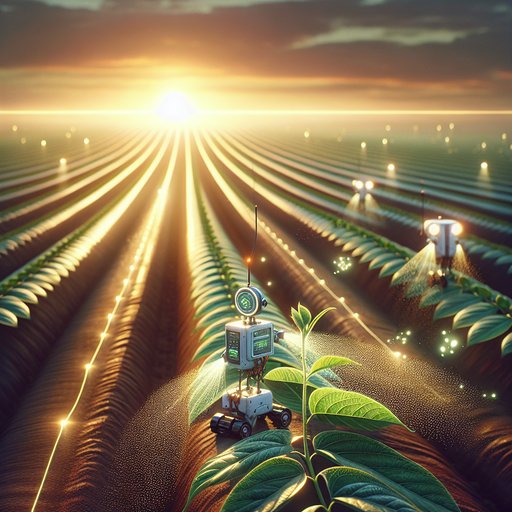
Weather grows stranger, labor scarcer, soils tighter with debt and compaction. Yet in fields where diesel once set the tempo, quiet electric motors and lines of code begin to carry the tune. Autonomous farm robots and AI-driven precision agriculture don’t promise a silver bullet; they offer something more pragmatic and radical at once—attention. Plant by plant, patch by patch, these systems measure, decide, and act with a granularity that was once impossible, turning brute-force cultivation into a choreography of restraint. If food security is the ability to produce enough, reliably, in the teeth of climate and market shocks, then machines that see every leaf and remember every storm are less a sci‑fi flourish than a new layer of agronomy. The opportunity is to grow smarter, not simply bigger: to harvest resilience from information.

A melody lands in your inbox that you don’t remember writing. The brushstroke on your screen looks eerily like your own hand, except it came from a prompt you typed between emails. A paragraph stares back in your cadence, but you never wrestled with its commas. AI-generated music, art, and literature are no longer curios—these systems sit beside us like fluent studio mates, answering “what if?” faster than we can form the question. They challenge a belief that creativity is a private spark contained within a singular mind, and they do it in public, at scale. Inside that friction lies a chance: to renegotiate authorship, invent new genres, and build economic and ethical infrastructure that matches the texture of collaborative creation. The fight over definitions has begun in living rooms and courtrooms, but the real experiment is unfolding in the work itself.

At sunrise, the rows glow not just with dew but with data. Electric crawlers trace the edges of beds, cameras study leaf veins, and a sprayer hesitates before deciding that this one weed deserves a precise bead of herbicide. The choreography is quiet—no roar of diesel, only the whir and click of sensors doing math on the move. It’s farming as choreography: centimeters matter, milliseconds matter, and each decision about water or nutrients ripples through a supply chain that begins at a root and ends in a city. Autonomous robots and AI-driven precision agriculture are not sci‑fi experiments anymore; they are practical tools that promise fewer losses, less waste, and steadier harvests in an age when the climate tosses dice. They may not feed the world by themselves, but they can tilt the odds.

Before sunrise, a hospital corridor hums with quiet intent. A cart-sized robot whispers past a nurse, balancing trays of lab samples; an algorithm flags a radiologist about a subtle shadow on a lung; a robotic arm in a windowless lab stamps tiny droplets onto a plate while a model predicts which arrangement of atoms might ease a failing heart. Three revolutions—AI-driven diagnostics, clinical robotics, and machine-guided drug discovery—are converging, not as the thunderclap of a single invention but as a new weather system settling over medicine. Their roots stretch back to bodies pressed against wooden stethoscopes and early X-rays ghosting bones onto glass. Their promise is not just speed, but a new choreography: machines listening and looking, humans deciding and caring.










































